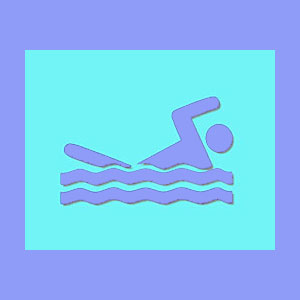
Swimming for sciatica is a wonderful exercise therapy option which might also help to alleviate the symptoms of some forms radiculopathy. Swimming is a great cardiovascular activity and entails virtually no impact, making it an ideal exercise choice for patients who suffer from tremendous chronic pain.
This dialog will examine why swimming is so effective for providing relief for many patients, despite the often illogical correlation between exercise and the present diagnostic theory. We will further explore the benefits of swimming as a sciatica treatment, as well as its limitations.
Swimming for Sciatica Benefits
Swimming is a wise choice for patients who want to exercise more often, but find some forms of physical activity uncomfortable. Swimming is a gentle option, since the water provides a smooth, non-jarring workout. Additionally, the effects of gravity are countered by the body’s buoyancy, taking pressure off sensitive spinal and nerve structures and helping to reduce pain.
Swimming can be done alone or with the guidance of a physical therapist, to maximize the healing potential of the activity. Swimming is a terrific way to get in shape and add lean muscle, regardless of whether you have back pain or not.
Therapeutic Swimming Facts
Swimming is not likely to cure your pain all by itself. Patients with actual structural spinal conditions creating their sciatica pain might not experience any relief from physical activity whatsoever. In fact, some patients may endure worse pain upon moving around in the water.
However, chronic sciatica syndromes that are caused by ischemia of the regional muscular and nerve tissues will certainly benefit from fitness activities. Exercise temporarily counters the effects of ischemia, by increasing circulation and therefore, cellular oxygenation.
Exercise can also work wonders for many muscular, tendon and ligamentous conditions which might enact pseudo-sciatica, such as imbalances and muscular sciatic nerve constriction. If you enjoy considerable relief from any form of sciatica exercise, but your symptoms return in full a short time later, there is a good chance that your pain is the direct result of anatomical oxygen deprivation or some localized soft tissue pathology.
Swimming for Sciatica Guidance
I am an avid swimmer, thanks the example set by my beloved mother. I was virtually raised at the beach, and in the pool, and learned to enjoy the water from an early age. I highly recommend taking the time to experience the wonder of swimming, diving and other water-related activities. That being said, I can not endorse swimming as a cure for most types of sciatica. Ischemic syndromes will respond well to exercise, but only in the short term.
The only way to permanently resolve these conditions is to discover the underlying anatomical or psychosomatic causations enacting the pain. Once the true cause has been discovered, finding relief should be far easier.
Remember, without an accurate sciatica diagnosis, beating your pain is nearly impossible.
If you have been definitively diagnosed with piriformis syndrome or another variation of soft tissue enacted pseudo-sciatica, swimming may be one of the best treatment options.
In any case, be sure to talk to your doctor or physical therapist for their thoughts on swimming. If they do endorse it as a means of relieving sciatica, be sure to ask them why. This is especially true if you have been diagnosed with a spinal condition sourcing the pain. I would love to hear their reply.





